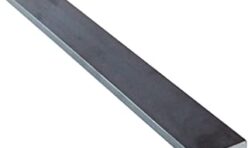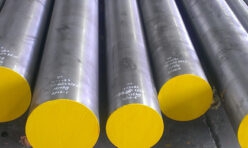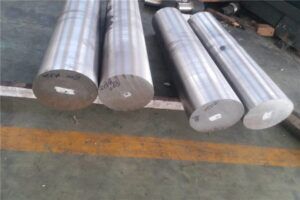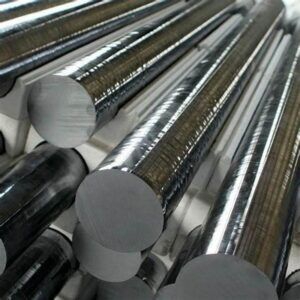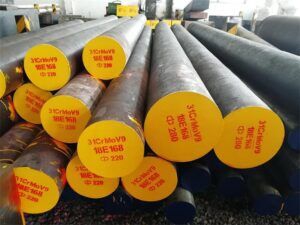AISI 1095 Sping Steel
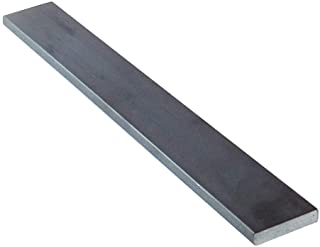
AISI 1095 Sping Steel
AISI 1095 Steel
SAE AISI 1095 steel is one of the most widely used 10 series steels, with good performance and low cost, with appropriate toughness and wear resistance, but poor corrosion resistance.
1095 Carbon Steel Applications
AISI SAE 1095 carbon steel can be made into steel billets, steel powder, which can be used as tool steel, blade steel, spring steel. 1095 high carbon steel uses mainly include chef knife, kitchen knife, pocket knife, mower knives, Bowie knife, hunting knife, doctor blade, wear parts, various springs, plow beams, ploughshares, scraper blades, and brake discs.
Datasheet & Specification
Below is material AISI 1095 steel datasheet and specification including chemical composition, mechanical properties, heat treat, density, thermal expansion coefficient, thermal conductivity, yield strength, hardness, etc.
AISI SAE 1095 Chemical Composition
The table below lists AISI 1095 carbon steel chemical composition.
| AISI 1095 Chemical Composition (%) | |||||
| ASTM | AISI Type (UNS) | C | Mn | P (≤) | S (≤) |
| ASTM A29/A29M | 1095 (UNS G10950) | 0.90-1.03 | 0.30-0.50 | 0.040 | 0.050 |
AISI 1095 Mechanical Properties
SAE AISI 1095 steel mechanical properties are given in the table below.
| Steel (UNS) | Tensile strength (Mpa) | Yield strength (Mpa) | Elongation in 50 mm, % | Reduction in area, % | Hardness (HB) | Processing, condition or treatment |
| AISI 1095 (UNS G10950) | 830 | 460 | 10 | 25 | 248 | Hot rolled |
| 680 | 520 | 10 | 40 | 197 | Spheroidized annealed cold drawn | |
| 655 | 380 | 13 | 21 | 192 | Annealed at 790 °C (1450 °F) | |
| 965 | 570 | 9 | 18 | 293 | As-rolled | |
| 1015 | 505 | 9.5 | 14 | 293 | Normalized at 900 °C (1650 °F) |
Cold-rolled strip used for cold formed springs
Minimum tensile strength (Tempered), MPa (ksi): 1240-2340 (180-340);
Modulus of elasticity, GPa (ksi): 210 (30,000)
Annealed Hardness (HRB): 88
AISI SAE 1095 Physical Properties
Notes: 10-6/K = 10-6.K-1 = (µm/m)/°C
| 1095 carbon steel coefficients of linear thermal expansion | ||
| Value (10-6/K) | Temperature, °C (°F) | Treatment or condition |
| 11.4 | 20-100 (68-212) | Annealed |
| 13.0 | 0-100 (32-212) | Hardened |
| 14.6 | 20-650 (68-1200) | |
| Material 1095 thermal conductivity | |
| Value (W/m·K) | Temperature, °C (°F) |
| 46.7 | 100 (212) |
| Specific Heat of AISI 1095 High Carbon Steel | |
| Value (J/Kg·K) | Temperature, °C (°F) |
| 461 | 20-100 (68-212) |
| Electrical Resistivity of AISI SAE 1095 Steel | |
| Value (μΩ·m) | Temperature, °C (°F) |
| 0.18 | 20 (68) |
SAE 1095 Steel Heat Treatment
The following table shows 1095 steel heat treat and rockwell hardness.
Transformation Temperature
| Approximate Ac 1 , Ac 3 , Ar 1 , and Ar 3 of 1095 high carbon steel | |||
| AISI grade | Transformation | Temperatures, °C (°F) | Brinell hardness HB, after air cool |
| 1095 | Ac1 | 730 (1340) | 321-255 |
| Ac3 | 770 (1415) | ||
| Ar3 | 725 (1340) | ||
| Ar1 | 700 (1290) | ||
| Heating or cooling at 28 °C (58 °F)/h | |||
| 1095 Heat Treat Temperature | |||
| Steel | Austenitizing temperature for direct hardening, °C (°F) | Normalizing temperature, °C (°F) | Full annealing temperature, °C (°F) |
| 1095 | 790-815 (1450–1500) | 845-900 (1550-1650) | 790-830 (1450-1525) |
Notes: The austenitizing of 1095 steel is commonly used on parts where induction hardening is employed, the quenching medium is water, brine or oil. If oil quenching is used, the alternatively austenitizing temperature may be 815-870 °C (1500-1600 °F).
Normalizing
1095 steel normalizing temperature range is 845-900 °C (1550-1650 °F), typically normalized at 845 °C (1550 °F), and should be cooled in still air.
Full Annealing for Small Steel Forgings
| Recommended temperatures and cooling cycles for full annealing of small carbon steel forgings | |||
| Steel forging | Full annealing temperature, °C (°F) | Cooling cycle, °C (°F) | Brinell hardness HB |
| 1095 | 790-830 (1450-1525) | 790 to 655 (1450-1215) | 167-229 |
Notes: The data are for forgings with a maximum section thickness of 75 mm (3 in.). For parts with a maximum thickness of 25 mm (1 in.), the time at temperature is usually at least 1 hour; for each additional thickness of 25 mm, add 0.5 h. The furnace cooling rate is 28 °C/h (50 °F/h).
Hardening of 1095 High Carbon Steel
Heat to 800 °C (1475 °F). Quench in water or brine. The oil quenching section below 4.75 mm (3/16 in.) is used for hardening. The hardness after quenching is as high as 66 HRC. The maximum hardness can be adjusted downwards by tempering.
Austempering
1095 high carbon steel responds well to austempering (bainite hardening). Austenitize at 800 °C (1475 °F). Quench in a agitated molten salt bath at 315 °C (600 °F). Hold for 2 hours and cool in air.
Direct Hardening
| Typical heat treatments for direct hardening. Temper to desired hardness | ||||
| SAE steel | Normalizing temperature, °C (°F) | Annealing temperature, °C (°F) | Hardening temperature, °C (°F) | Quenching medium |
| 1095 | 845-900 (1550-1650) | 760-815 (1400-1500) | 855-885 (1575-1625) | Water or oil |
Notes: Spherical structures are usually used for processing purposes and should be cooled or isothermally transformed very slowly to produce the desired structure.
Tempering
| Typical hardnesses of 1095 carbon steel after tempering for 2 hours at different temperatures | |||
| Grade | Temperature, °C (°F) | Rockwell hardness, HRC | Heat treatment |
| 1095 high carbon steel, carbon content: 0.95% | 205 (400) | 58 HRC | Normalized at 885 °C (1625 °F), water quenched from 800-815 °C (1475-1550 °F); average dew point, 7 °C (45 °F) |
| 260 (500) | 57 HRC | ||
| 315 (600) | 52 HRC | ||
| 370 (700) | 47 HRC | ||
| 425 (800) | 43 HRC | ||
| 480 (900) | 42 HRC | ||
| 540 (1000) | 41 HRC | ||
| 595 (1100) | 40 HRC | ||
| 650 (1200) | 33 HRC | ||
1095 Steel Equivalent Grade
AISI 1095 high carbon steel equivalent to European EN (Germany DIN EN, British BSI, French NF…), Chinese GB and Japanese JIS standard.
Notes:
DIN 17350: Tool steels, has been replaced by EN ISO 4957.
GB/T 1298: Carbon tool steels
JIS G4401: Carbon tool steels
DIN 17222: Cold rolled steel strips for springs
| AISI 1095 equivalent material | |||||||||||||
| US | European Union | Germany | China | Japan | ISO | ||||||||
| Standard | Grade (UNS) | Standard | Grade | Standard | Grade (Steel Number) | Standard | Grade (Steel Number) | Standard | Grade | Standard | Grade | Standard | Grade (Steel Number) |
| AISI; SAE; ASTM A29/A29M |
1095 (UNS G10950) | AMS | 5121F, 5122F, 5132G | EN ISO 4957 | C105U (1.1545) | DIN 17350; DIN 17222 | C105W1 (1.1545); Ck101 (1.1274) | GB/T 1298, GB/T 3278, GB/T 5952 | T10 | JIS G4401 | SK105 | ISO 4957 | |
HOW GOOD IS 1095 STEEL?
1095 Steel is a basic form of carbon steel and is most commonly used in the construction of various kinds of knives. It has a carbon content of .95% which serves to harden the steel and reduce the amount of wear that a blade will experience over time. Despite the reduction in wear created by the high presence of carbon, 1095 steel is not as tough as other types of steel due to the lower levels of manganese, which serves to harden the steel. Yet, although manganese hardens steel when used in certain levels, in higher levels it makes for a more brittle blade overall.
1095 STEEL FOR KNIVES
1095 steel, when used in knives, holds a great edge and is very easy to sharpen. However, the properties of this type of steel give it a tendency to easily rust if not oiled and deliberately cared for. These kinds of blades will usually have some kind of coating to combat rusting, but so long as the blade is properly cared for, rust should not be too great a problem for anyone.
Because 1095 steel can be considered more brittle than other types of steel, it is generally good for blades that are not too thin. It is easy to sharpen, but if a blade made with this type of steel doesn’t have a decent amount of thickness behind it, it is liable to break easily. For example, it is not an appropriate grade of steel for tools, folding knives, or sushi knives.
1095 can be heat treated to increase its overall strength, but if 1095 steel gets brittle after that point, there is not much that can be done about it and it may break on you. Though it can be used in tools such as chopping knives, it is not necessarily the most effective choice. It shines, but there are other steels out there which are better formulated to be used in such objects. 1095, though not alloyed with chromium like stainless steel, takes a great polish very easily.

